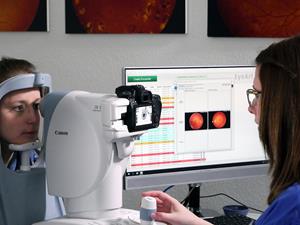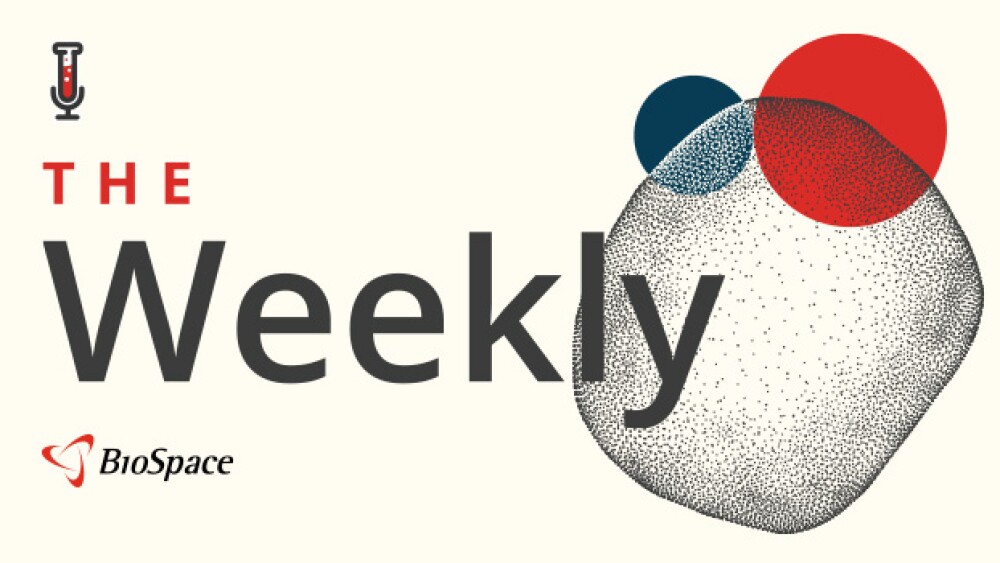Eyenuk, Inc. from the EyeArt prospective, multicenter pivotal clinical trial were published as an original investigation in JAMA Network Open, a peer-reviewed medical journal published by the American Medical Association. The article is titled “ Pivotal Evaluation of
LOS ANGELES, Nov. 15, 2021 (GLOBE NEWSWIRE) -- Eyenuk, a global artificial intelligence (AI) medical technology and services company and the leader in real-world applications for AI Eye Screening, announces today that strong results from the EyeArt prospective, multicenter pivotal clinical trial were published as an original investigation in JAMA Network Open, a peer-reviewed medical journal published by the American Medical Association. The article is titled “Pivotal Evaluation of an Artificial Intelligence System for Autonomous Detection of Referrable and Vision-threatening Diabetic Retinopathy”.
The EyeArt pivotal clinical trial (NCT03112005) was designed with inputs from the United States Food and Drug Administration (FDA) to evaluate performance of the EyeArt AI system for detecting eyes with more than mild diabetic retinopathy (mtmDR) and vision-threatening diabetic retinopathy (vtDR). 942 individuals with diabetes participated in the study at 15 primary care and eye care facilities in the US. The EyeArt AI system analyzed two undilated images per eye for detecting mtmDR and vtDR. The EyeArt results were then evaluated against the rigorous clinical reference standard using the Early Treatment Diabetic Retinopathy Study (ETDRS) grading scale by experts at the University of Wisconsin Reading Center using ten fundus images per eye captured after dilation by certified photographers.
The accuracy of the EyeArt AI system was high in detecting mtmDR (sensitivity 96% and specificity 88%) and vtDR (sensitivity 97% and specificity 90%). The EyeArt AI system gave mtmDR and vtDR detection results for more than 97% of the eyes graded by experts, with most (88%) not requiring dilation. The study demonstrates the ability of EyeArt system to accurately detect mtmDR and vtDR without physician oversight or the need for dilation in most individuals, thus facilitating diabetic eye exams at non-specialist facilities and enabling accelerated referral of vision-threatening diabetic retinopathy.
“Over four hundred million people around the world have diabetes and approximately one-third of them may develop diabetic retinopathy, which is the leading cause of vision loss among working-age adults in most countries,” said Eli Ipp, M.D., Investigator at The Lundquist Institute, Professor of Medicine, David Geffen School of Medicine at UCLA, Head of the Section of Diabetes and Metabolism at Harbor-UCLA Medical Center, and the first author of the EyeArt publication on JAMA Network Open. “The EyeArt technology has the potential to save vision for millions of people around the world. The EyeArt pivotal trial is well designed, and we are gratified that it is now published by JAMA Network Open.”
“The JAMA Network Open publication is the latest EyeArt milestone we have achieved, after the FDA clearance and recent CMS decision to establish CY 2022 national reimbursement fee for CPT code 92229,” commented Kaushal Solanki, PhD, founder and CEO of Eyenuk. “The EyeArt pivotal clinical trial was the first-of-its-kind landmark study evaluating an autonomous AI technology’s performance in detecting two levels of diabetic retinopathy, using the rigorous ETDRS clinical reference standard.”
This EyeArt publication coincides with the American Academy of Ophthalmology (AAO) 2021 Annual Meeting in New Orleans, where the EyeArt AI technology is featured at booth #2056 until 5pm CST on November 15. Dr. SriniVas Sadda from the Doheny Eye Institute at UCLA and Professor Jeffrey Henderer from Temple University Health presented EyeArt clinical and implementation results at the AAO Industry Showcase Theatre on November 14.
About the EyeArt AI System
The EyeArt AI System provides fully autonomous diabetic retinopathy (DR) screening, including retinal imaging, DR detection based on international clinical standards and immediate reporting, in a single office visit during a diabetic patient’s regular exam. Once the patient’s fundus images have been captured and submitted to the EyeArt AI System, the DR detection results are available in a PDF report in less than 30 seconds.
The EyeArt AI System was developed with funding from the U.S. National Institutes of Health (NIH) and is validated by the U.K. National Health Service (NHS). In addition to U.S. Food and Drug Administration (FDA) 510(k) clearance, the EyeArt AI System has CE marking as a class 2a medical device in the European Union and a Health Canada license. It is designed to be General Data Protection Regulation (GDPR) and Health Insurance Portability and Accountability Act of 1996 (HIPAA) compliant.
The EyeArt System is reimbursable by government and private payors in the U.S. under the newly created Category 1 Current Procedural Terminology (CPT) code 92229.
VIDEO: Learn more about the EyeArt AI System for Autonomous Detection of Diabetic Retinopathy
About Eyenuk, Inc.
Eyenuk, Inc. is a global artificial intelligence (AI) medical technology and services company and the leader in real-world AI Eye Screening for autonomous disease detection and AI Predictive Biomarkers™ for risk assessment and disease surveillance. Eyenuk is on a mission to screen every eye in the world to ensure timely diagnosis of life- and vision-threatening diseases, including diabetic retinopathy, glaucoma, age-related macular degeneration, stroke risk, cardiovascular risk, and Alzheimer’s disease. Find Eyenuk online on its website, Twitter, Facebook, and LinkedIn.
Eyenuk, Inc. Contact
Frank Cheng, President & CCO
frank.cheng@eyenuk.com
+1 818 835 3585
A photo accompanying this announcement is available at https://www.globenewswire.com/NewsRoom/AttachmentNg/813b1526-4da6-4ad1-8e83-6246d7fdf6c4






